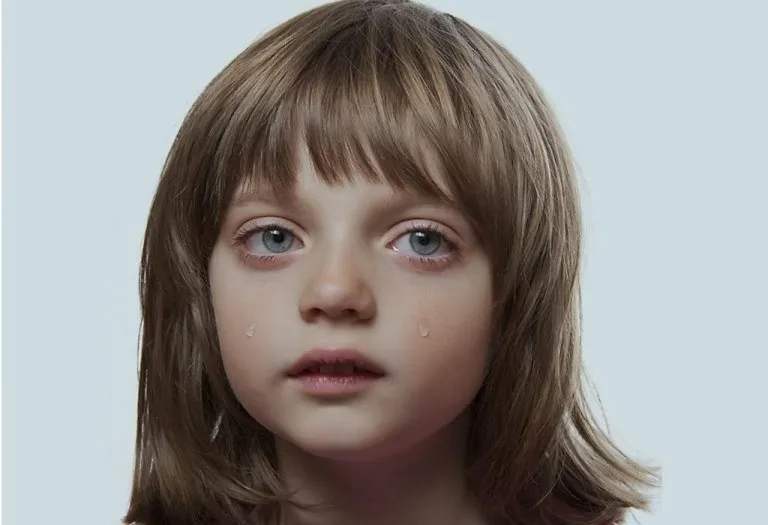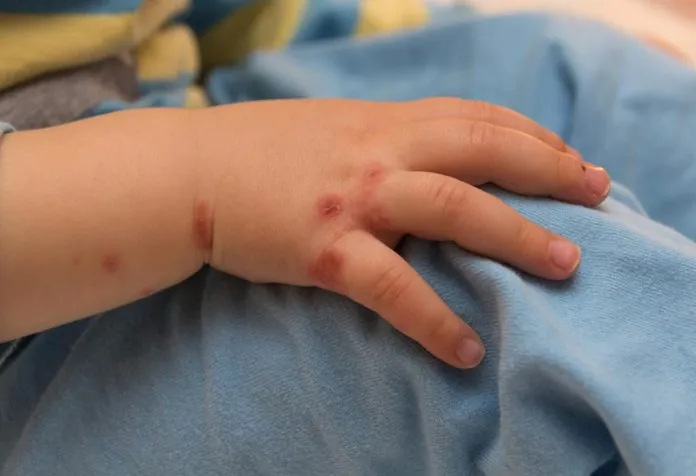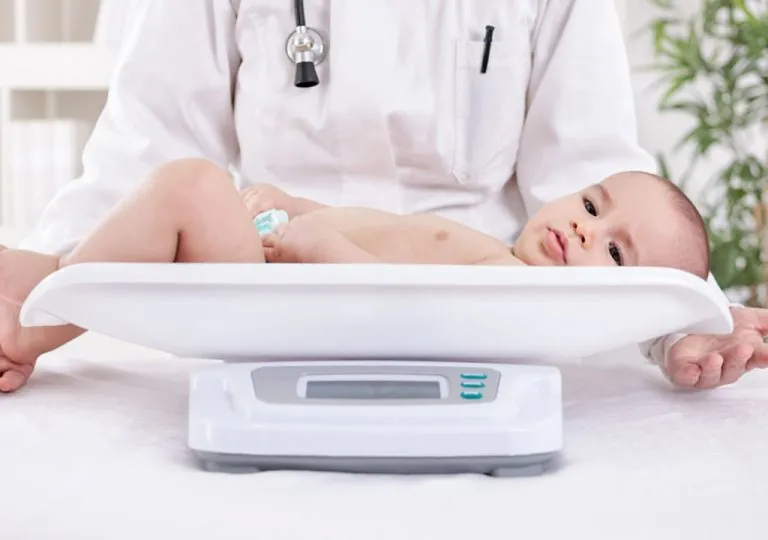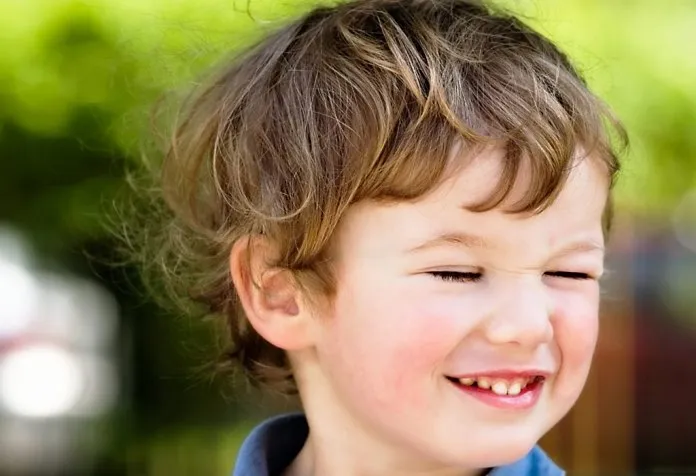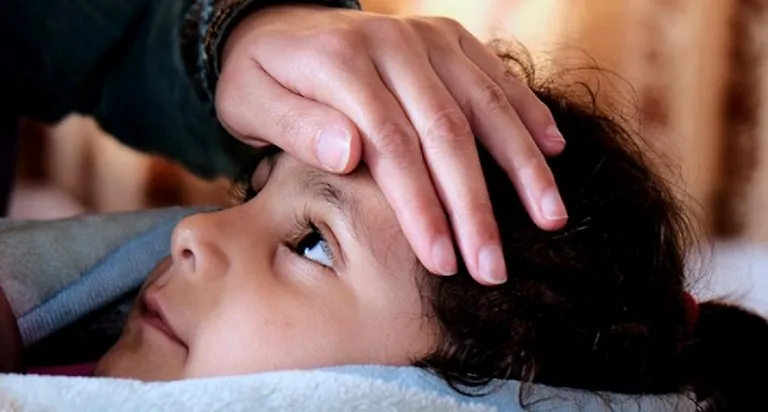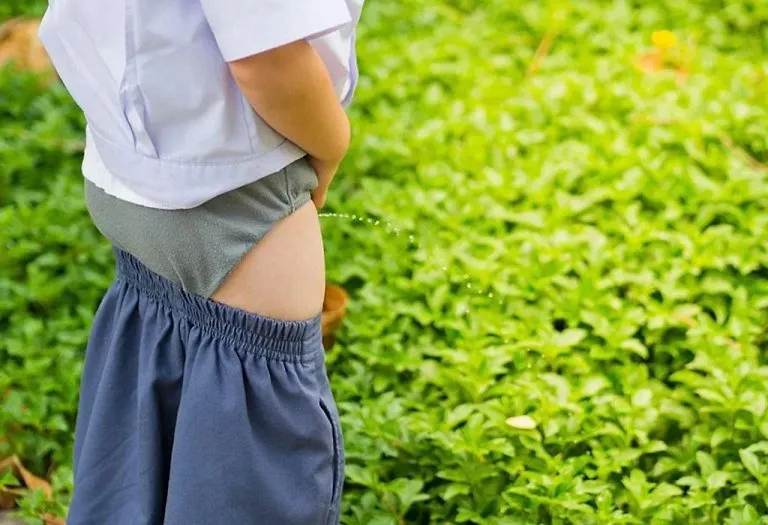Watery Eyes (Epiphora) in Kids – Causes, Symptoms & Treatment

Are your kiddo’s eyes teary most of the time without any evident reason? Well, there are chances that your child may be suffering from a condition called Epiphora, or, in simple terms, watery eyes. As a parent, it’s completely normal to feel anxious whenever something concerns your little one’s health. Watery eyes in kids can be caused by various factors. Before you panic or get overly worried, we suggest you read through the following article to learn more about this common issue. Understanding the causes and treatments can help ease your concerns and ensure your child gets the right care.
What Are Watery Eyes in a Child?
As the name suggests, watery eyes is a condition where your kid’s eyes may continuously fill with water or your kid’s eyes produce excessive amounts of water or tears (1).
What Are the Causes of Watery Eyes in Kids?
There are many reasons that may lead to childhood epiphora, or watery eyes in child and some of the causes are listed as follows (2):
- Children often forget to blink regularly and thus not blinking for longer durations may lead to watery eyes.
- If any kind of foreign objects may enter your kid’s eyes, it may lead to irritating, itching and watery eyes,
- Sometimes certain kinds of allergies may cause redness, itching and watery eyes in kids.
- In some cases, the drainage channel of your kid’s eyes may get blocked, leading to watery eyes.
- Some kids may have blocked air ducts that may hamper the excess water or tears to drain from the eyes.
Signs and Symptoms of Watery Eyes in Children
One of the most evident signs of Epiphora in children is the excessive amount of water in your kid’s eyes. Apart from this may also notice the following symptoms (3):
- Your kid may experience swelling in his eyelids.
- Your kid may sneeze constantly or may have watery eyes with fever and cough.
- Your kid may face difficulty in seeing properly.
- Your kid may feel a burning sensation in his eyes.
- Your kid may have some discharge from his eyes.
- Your kid may experience itching in his eyes.
- Your kid may experience pain in his eyes.
- Your kid’s eyes may appear red or bloodshot.
- You kid may get the feeling of some foreign object in his eyes.
- Your kid’s eyes may have some kind of crust formation around his eyes.
How Is the Examination of Watering Eyes Performed?
In most cases, a physical examination and review of the symptoms may help the doctor in ascertaining this condition in your kid. In some cases to identify the blockage, a probe may be inserted into the eyelid or canaliculi. In very rare cases, your doctor may recommend various imaging tests and procedures, depending on the severity of your child’s condition.
How Are Watery Eyes Treated?
Here are some of the treatment options that your doctor may recommend for your kid’s watery eyes (4):
1. Managing Infections and Antibodies
- As soon as you register the symptoms in your kid, you may wipe your kid’s eyes with warm water on a regular basis.
- If there is an active infection, your doctor may administer antibiotics for your kid.
- Until or unless absolutely necessary or advised by your doctor, you should not use any topical antibiotic treatment for watery eyes for your kid.
2. Surgical Treatment
- Most cases of watery eyes in toddlers, which are due to closed tear ducts, resolve by the time they are one year of age. However, in a few cases, a surgical procedure may be required.
- The surgery may require general anaesthesia, and a probe may be inserted through the canaliculi to clear the obstruction.
- In most cases, there is only a delicate membrane that needs a breakthrough; however, sometimes there may be a tighter bony narrowing too. In such cases, there may be chances of recurrence.
Home Remedies to Treat Watery Eyes in Kids
Watery eyes in kids can be bothersome but are often manageable with simple home care. Here are some safe and effective home treatments to help soothe your child’s watery eyes (5).
- Warm Compress: Gently apply a clean, warm (not hot) washcloth to your child’s closed eyelids for a few minutes. This helps loosen any blockages in the tear ducts and reduces irritation.
- Saline Eye Rinse: Use a sterile saline solution or homemade saltwater rinse to flush out dust, allergens, or mild infections causing excessive tearing. Ensure the solution is lukewarm and applied carefully.
- Maintain Eye Hygiene: Wipe your child’s eyes with a soft, damp cloth to remove crusts or discharge. Always clean from the inner corner outward to prevent further irritation.
- Gentle Massage (Lacrimal Sac Massage): Using your clean little finger, gently massage the inner corner of your child’s eye (near the nose) in a downward motion. This stimulates the lacrimal sac, helps express mucus and fluid, and can open a blocked nasolacrimal duct. Regular massage may also help prevent conjunctivitis.
How to Prevent Watery Eyes in Children
While watery eyes in kids are often temporary, some simple preventive measures can help reduce irritation and tear duct blockages. Here are some effective ways to protect your child’s eyes and minimize excessive tearing (6):
- Wash your child’s hands frequently to prevent eye infections.
- Keep children away from smoke, dust, and strong winds.
- Identify and avoid potential allergens like pollen or pet dander.
- Trim your child’s bangs regularly to prevent hair from irritating eyes. Avoid rubbing eyes, as this can worsen irritation.
- Ensure a diet rich in vitamin A (carrots, leafy greens) for eye health and boosting immunity.
- Schedule routine eye exams to detect any underlying issues early.
When to Consult the Doctor
While occasional watery eyes are common in children, certain symptoms require medical attention. Here are key signs that indicate it’s time to consult a doctor (7):
- Persistent tearing lasting more than a few days without improvement
- Yellow or green discharge, which may indicate an infection
- Redness, swelling, or pain around the eyes
- Sensitivity to light or excessive blinking
- Fever accompanying eye symptoms
- Visible blockage or crusting that doesn’t clear with gentle cleaning
FAQs
1. Why does my child’s eye water only in cold weather?
Cold air can overstimulate tear production as a protective response. If excessive or painful, it could signal dry eyes or a blocked tear duct.
2. Could watery eyes be linked to food allergies?
While rare, certain food allergies may trigger eye symptoms. Watch for patterns (e.g., after dairy or nuts) and discuss with an allergist if suspected.
3. Is excessive eye watering a sign of vision problems?
Uncorrected refractive errors (like farsightedness) sometimes cause eye strain and tearing. An eye exam can rule this out if no other causes are found.
Watery eyes are a very common occurrence in kids and in most cases, this condition may get better on its own. However, if you notice the persistent symptoms, then it will be a good idea to seek medical help for the same. Timely medical intervention and treatment may help your kid to recover better from this ailment. Therefore, as soon as you register the symptoms of watery eyes in your child, you should take him to the doctor.
References/Resources:
1. National Library of Medicine – Assessment of the Watery Eye
3. NHS – Alder Hey Children’s – Watery Eye (Epiphora)
4. Cleveland Clinic – Epiphora (Watery Eyes)
7. Mayo Clinic – Watery Eyes: When to see a doctor
Also Read:
Excessive Blinking of Eyes in Children
Conjunctivitis (Pink Eye) in Babies & Kids
Most Effective Eye Care Tips for Children
How to Improve Weak Eyesight in Kids
Was This Article Helpful?
Parenting is a huge responsibility, for you as a caregiver, but also for us as a parenting content platform. We understand that and take our responsibility of creating credible content seriously. FirstCry Parenting articles are written and published only after extensive research using factually sound references to deliver quality content that is accurate, validated by experts, and completely reliable. To understand how we go about creating content that is credible, read our editorial policy here.






